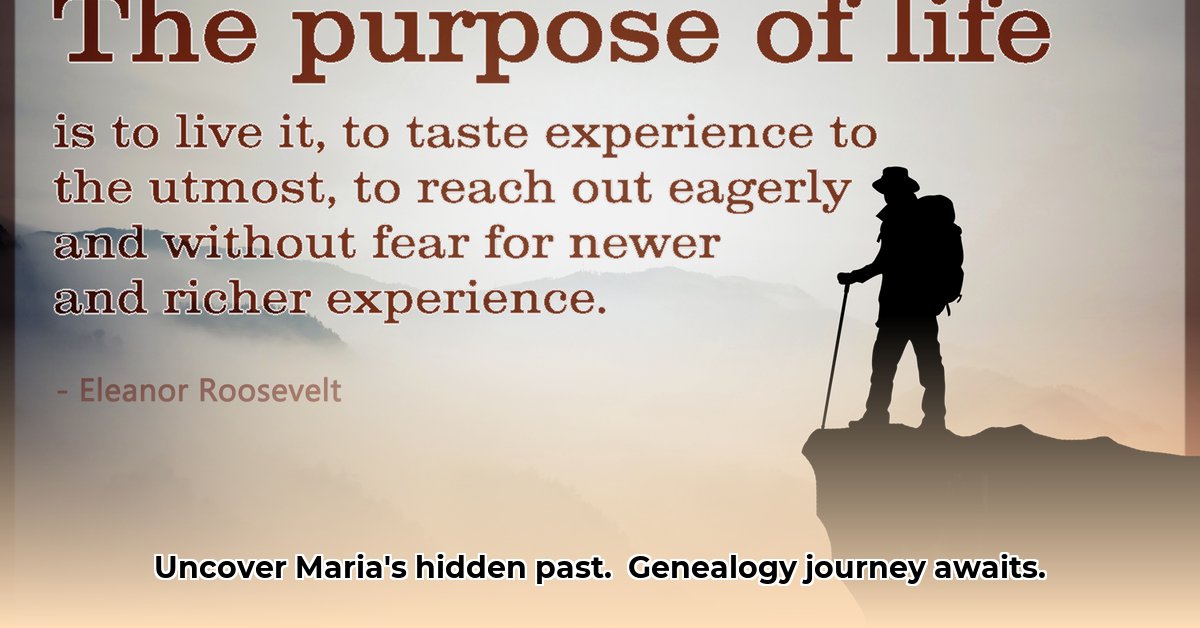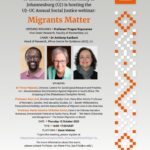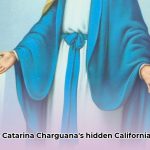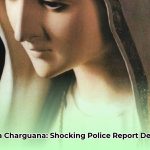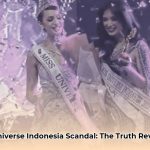Have you ever wondered about the lives of ordinary people who lived centuries ago? This is the story of Maria Catarina Charguana, a woman born in 1848 in California. Tracking down details about her life is like a historical detective story – a compelling puzzle involving culture, family, and the challenges of historical research! We’ll delve into old documents, explore the difficulties of finding information about individuals from that time, and share what we’ve uncovered so far about her family and background. It’s a story that connects us to California’s past and highlights how both fascinating and intricate genealogical research can be. For more information, check out her full biography [here](https://www.lolaapp.com/maria-catarina-charguana-biography). We’ll go through some of the roadblocks faced while piecing together her life story and explore how her life might be connected to other significant figures and events. It’s a journey of discovery, revealing both the challenges and the rewards of tracing a family’s history.
Unraveling the Mystery: Maria Catarina Charguana’s Life
This article takes you on a genealogical adventure to discover the life of Maria Catarina Charguana, born in 1848, a pivotal year in California’s history. Her life reflects the immense social and cultural shifts occurring in the region as California transitioned between Mexican and American rule. Our focus is on uncovering what we can learn about her life through meticulous research and careful consideration of historical context. What unique challenges arise when researching historical figures like Maria Catarina, and how can these obstacles be overcome?
A Californian Beginning: Family and Cultural Identity
Maria Catarina Charguana was born on May 4th, 1848, at Mission San Fernando Rey de España in California. Her parents, Jean Baptiste Charbonneau and Margarita Sobin, were from different backgrounds, representing the complex cultural landscape of California at the time. Jean Baptiste was the son of Sacagawea, the Lemhi Shoshone woman who played a crucial role in the Lewis and Clark Expedition. Margarita’s background is less clear, although records suggest she may have been a Luiseño woman. This intermingling of cultures offers a lens through which to view Maria Catarina’s early life. Exploring the cultural implications of Maria Catarina’s parentage is essential to broadening our understanding. Her baptism on May 28th, 1848, lists her name as “Charguana,” which possibly indicates her mother’s family name and highlights the complexities of identity in 19th-century California.
The Challenges of Tracing a Life in the 1800s
While we have some initial facts, many details about Maria Catarina’s life remain unclear. The precise nature of the relationship between her parents, for example, is not fully documented. Records about Margarita Sobin are scarce, presenting difficulties in piecing together her life story. Genealogical records from that era are often incomplete, lost, or simply never created, which adds another layer of difficulty to our research. As a result, confirming details about her life and ancestry requires extensive investigation. The limited availability of records emphasizes the need for diverse research methods.
Unlocking the Past: Research Strategies and Methodologies
To understand Maria Catarina’s life, we’re using a variety of research methods and resources:
- Examining Primary Sources: We are meticulously examining mission records, census data, baptismal records, and any other surviving original documents. These primary sources can provide direct evidence about Maria Catarina and her family.
- Exploring Secondary Sources: We are looking at historical studies, biographies, and academic articles that discuss the Charbonneau family, the Luiseño people, and California history in the 19th century. These secondary sources can provide valuable context and insights.
- Utilizing Online Databases: We are using genealogical databases such as Ancestry.com, FamilySearch.org, and other specialized historical archives to search for records related to Maria Catarina and her family.
- Consulting with Experts: Collaboration is essential, and we have reached out to historians specializing in California history, Native American studies, and genealogy to gain insights and guidance.
- Investigating Oral Histories: We are actively seeking out Luiseño oral histories, which could contain crucial information about Margarita Sobin and her family. Oral traditions can provide valuable perspectives and details not found in written records.
- Analyzing DNA Evidence: If possible, we would explore the possibility of analyzing DNA samples from individuals who believe they may be related to Maria Catarina to provide additional evidence and insights.
The Rewards of Genealogical Research
Genealogical research requires patience, persistence, and a willingness to navigate incomplete information and contradictory records. However, the rewards are significant. By learning about Maria Catarina, we gain a more profound understanding of California’s past, the lives of its diverse people, and the social and cultural dynamics of the 19th century. Her story reminds us that even fragmented narratives can reveal valuable insights into the human experience. Careful analysis of these details allows us to create a more complete picture of her life and times.
What We Know, and Where the Mysteries Remain
| Confirmed Facts | Uncertainties | Ongoing Research Areas |
|---|---|---|
| Born May 4th, 1848, Mission San Fernando | Parents’ relationship details | Mission records, marriage records search |
| Baptized May 28th, 1848, as “Charguana” | Details of Maria Catarina’s later life | Census data, archival searches, Luiseño histories |
| Father: Jean Baptiste Charbonneau | Children or descendants | Extensive archival searches, probate records |
| Mother likely Margarita Sobin (Luiseño heritage) | Specifics of Margarita’s life and ancestry | Luiseño oral histories, Mission San Luis Rey records |
Our genealogical journey is ongoing. Each new piece of information contributes to a greater understanding of this woman and her place in history. By continuing our research, we can strive to learn as much as we can about her life and the world in which she lived.
How to Trace Descendants of Maria Catarina Charguana
Key Takeaways:
- Maria Catarina Charguana’s life, born in 1848, presents a compelling genealogical puzzle with significant historical and cultural dimensions.
- Limited and fragmented documentation necessitates a multifaceted and collaborative approach to uncover her story.
- The uncertainty surrounding her surname and her mother’s background highlights the challenges of researching marginalized communities.
- Collaboration with the Luiseño community and other experts is crucial for accessing oral histories and contextual knowledge.
- This research underscores the importance of preserving and integrating Indigenous knowledge in genealogical studies.
The Elusive Charguana: Unraveling a 19th-Century Mystery
Our journey begins with a key detail: Maria Catarina Charguana was born on May 4, 1848, at Mission San Fernando Rey de España. But this apparent starting point quickly reveals the complexities and uncertainties inherent in genealogical research, especially when dealing with individuals from marginalized communities. How do we trace her descendants when even her surname is a question mark? How to trace descendants of Maria Catarina Charguana requires meticulous investigation and a comprehensive understanding of the historical and cultural context. Does the inconsistent spelling and usage of surnames affect the reliability and validity of historical records?
The primary source – her baptismal record – offers a foundation for further research. However, the use of “Charguana” raises questions about its origin and significance. Was it her mother’s maiden name, a variant spelling, or something else entirely? This uncertainty reflects the challenges of researching individuals whose identities were often marginalized or misrepresented in historical records. How can we improve the reliability of historical information?
Unpacking the Clues: A Genealogical Approach
Our investigation must be multifaceted and thorough. First, we need to delve deeper into the existing historical records, including Mission San Fernando archives, California census data, and other relevant databases. The inconsistent use of her surname across records suggests potential spelling variations or misinterpretations that require careful review. Second, we must examine the lives of her parents, Jean Baptiste Charbonneau and Margarita Sobin, to gain insights into her family background and cultural heritage. While much is known about Jean Baptiste Charbonneau, Margarita Sobin remains an enigmatic figure. Researching her Luiseño heritage and family connections could provide crucial information. Where can we potentially find additional insights about under documented historical relationships?
Next, we must consult broader genealogical resources, such as Ancestry.com and FamilySearch.org, to identify potential descendants and family connections. The reliability of each source needs careful evaluation. We must be diligent in verifying each piece of information and cross-referencing it with multiple sources to minimize errors and biases.
The Power of Collaboration: Oral Histories and Community Engagement
Crucially, tracing Maria Catarina’s descendants should involve collaboration with the Luiseño community. Oral histories passed down through generations might fill gaps in written records and provide invaluable insights into her family and cultural heritage. It’s about respecting and integrating Indigenous knowledge in a way that acknowledges systemic biases in colonial record-keeping. Their perspectives, experiences, and understanding of their own history hold great significance in this pursuit. What ethical considerations should guide our efforts to respect and integrate indigenous knowledge and oral histories?
Mapping the Way Forward: Next Steps
To effectively trace Maria Catarina’s descendants, we need a systematic approach involving several key steps:
- Comprehensive Record Search: Exhaustive examination of Mission San Fernando’s archives, along with California census data
- Unlocking Evie McGee’s Parents:A Deep Dive into Evelyn Colbert’s Success - July 25, 2025
- Discover Evie in Rosie’s Rules: A Complete Character Guide - July 25, 2025
- Evelyn McGee Colbert Family: 30 Years of Success and Love - July 25, 2025
